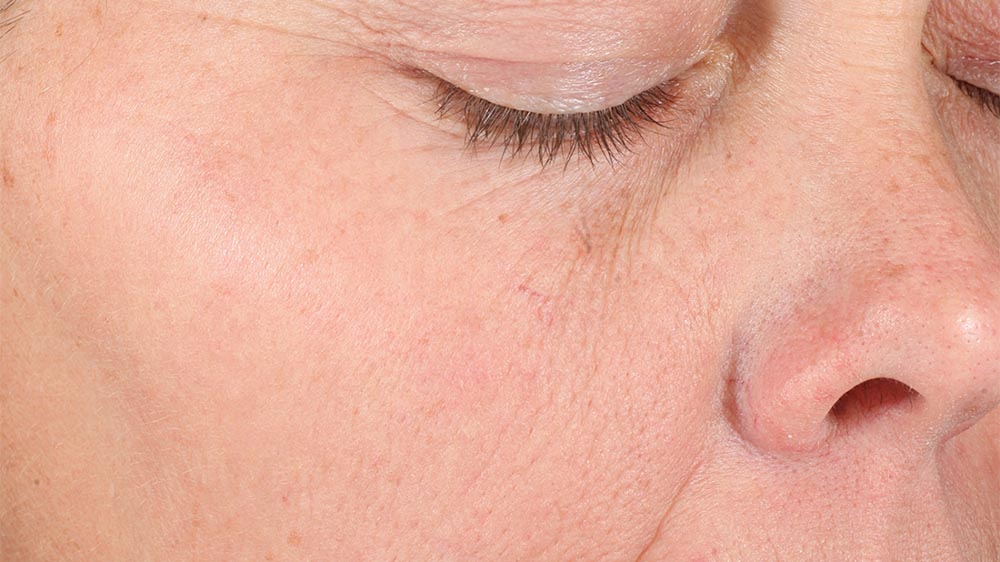
Red Light Therapy

What is Red Light Therapy (RLT)?
Visible red and near-infrared (NIR) light therapy, commonly known as “red light therapy,” utilizes targeted wavelengths of light to provide various health benefits.
Scientifically Proven Red Light Therapy Benefits

For Skin
- Reduce wrinkles and fine lines
- Fade scars and stretch marks
- Improve skin tone and texture
- Reduce inflammation
- Enhance wound healing

For Pains
- Reduce muscle soreness and inflammation
- Pain relief for conditions like arthritis
- Improve joint health
- Improve athletic performance and faster recovery

For Mental
- Reduce symptoms of depression and anxiety
- Better sleep quality
- Enhance cognitive function
- Increase energy levels and reduced fatigue
What's More...
It helps to:
- Reduce side effects of skin cancer treatment
- Improve thyroid function
- Enhance collagen production
- Hair growth
- Weight loss
- Eye health

Red Light Therapy Before & After


Red Light Therapy at Home vs. In-Clinic
🏡 At-Home:
- Convenience: You can use devices at your own schedule, which saves time and allows for frequent sessions.
- Cost-Effectiveness: Initial costs can be high for quality devices, but it avoids ongoing clinic fees.
- Privacy: Therapy in the comfort of your home provides a private setting, allowing you to relax, heal, and rejuvenate in your own space.
- Device Varieties: Home devices vary in size, intensity, and wavelength. Quality can vary, so choosing a reputable brand is important.
- Maintenance: Regular cleaning and care are needed to ensure device longevity and effectiveness.
🏥 In-Clinic:
- Professional Equipment: Clinics often use high-end, professional-grade machines that may deliver more powerful and targeted treatments.
- Expert Guidance: Treatments are administered by trained professionals who can customize sessions based on individual needs.
- Consistent Results: Professional settings ensure consistent quality and may offer advanced techniques or combination therapies.
- Convenience & Frequency: Clinics may offer flexible scheduling, but ongoing costs can be significant compared to home use.
- Safety: Professionals ensure proper use and monitor for any adverse reactions or adjustments needed.
Choosing between at-home and in-clinic red light therapy depends on factors like personal preferences, budget, and treatment goals. At-home options offer flexibility and privacy, while in-clinic treatments provide professional-grade care and expertise.
FAQs of Red Light Therapy
Yes, red light therapy is generally considered safe when used correctly. It involves exposure to low-level red or near-infrared light, which can help with skin healing and inflammation. However, it’s important to follow guidelines and consult with a healthcare provider to avoid potential risks or misuse.
There's no definitive proof that red light therapy can cause cancer. It uses low-level red or near-infrared light, which does not have the same harmful effects as ultraviolet (UV) light.
Some studies, including those published in journal Lasers in Medical Science, suggest that red light therapy can inhibit cancer cell growth in vitro.
However, it’s important to note that these results are based on laboratory studies, and further research is needed to understand the therapy’s effects in clinical settings and its safety for cancer patients.
Red light therapy uses low-level red or near-infrared light to penetrate the skin, stimulating cellular processes. It promotes healing, reduces inflammation, and enhances collagen production by energizing mitochondria in cells. This non-invasive treatment can improve skin health, reduce pain, and aid in tissue repair.
To use red light therapy effectively:
Choose a Device: Select a reputable red light therapy device that matches your needs (e.g., handheld, panel, or pad).
Prepare the Area: Ensure the skin area you plan to treat is clean and free of lotions or makeup.
Position the Device: Place the device about 6-12 inches from the skin, depending on the manufacturer’s instructions.
Set Duration: Follow the recommended treatment time, typically 5-20 minutes per session.
Frequency: Use 2-5 times per week for best results.
Protect Eyes: Wear protective goggles if the light is intense.
Consistency: For optimal results, maintain a consistent treatment schedule.
Yes, you can generally use red light therapy after Botox injections, but it’s best to wait at least 24-48 hours. Red light therapy helps with healing and reducing inflammation, but it’s important to follow your provider’s aftercare instructions. Always consult with your healthcare provider to ensure compatibility with your treatment. Click to Learn More!
Red light therapy is generally safe but can have some risks if misused. Potential dangers include:
Eye Damage: Prolonged exposure to intense red light can harm eyes, so protective eyewear is recommended.
Skin Sensitivity: Overuse may cause temporary redness or irritation.
Worsening Conditions: Individuals with certain medical conditions or medications may experience adverse effects.
Always consult a healthcare provider before starting therapy.















